Morbidly obese at 212kg, he had a hard time even walking. A surgery changed that
Vasoo Kesevan went from being overweight to morbidly obese, and from being happy to being hurt until he came to a big decision. CNA Insider tracks his journey through bariatric surgery for over a year.
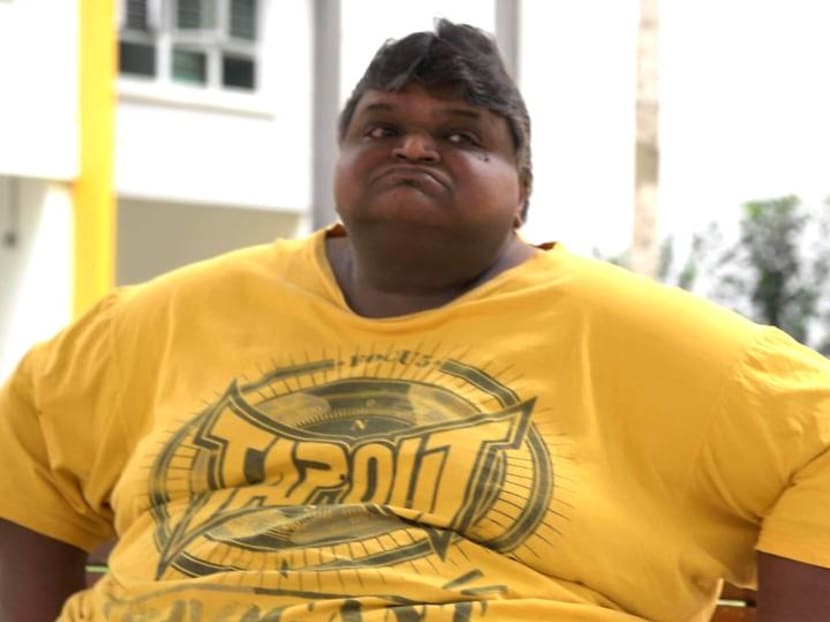
Hampered by chronic asthma and an old knee injury, Vasoo Kesevan needed help to lose weight.
SINGAPORE: At his heaviest, Vasoo Kesevan weighed 212 kilogrammes. Even before he reached that point, he was hurting.
Whenever he took his children to the playground, he could see some of the parents looking at him, “as if they’d never seen a big-sized guy in their lives before”.
It was the kind of look he got wherever he went. Sometimes there was more, for example once when he was waiting for a taxi with his two children.
“A small boy — I think he must’ve been (in) Kindergarten Two or Primary One, somewhere around there — looked at me. He started to tell his mother, ‘Look at this fat man,’” recalled the 47-year-old. “The mother didn’t say anything.”
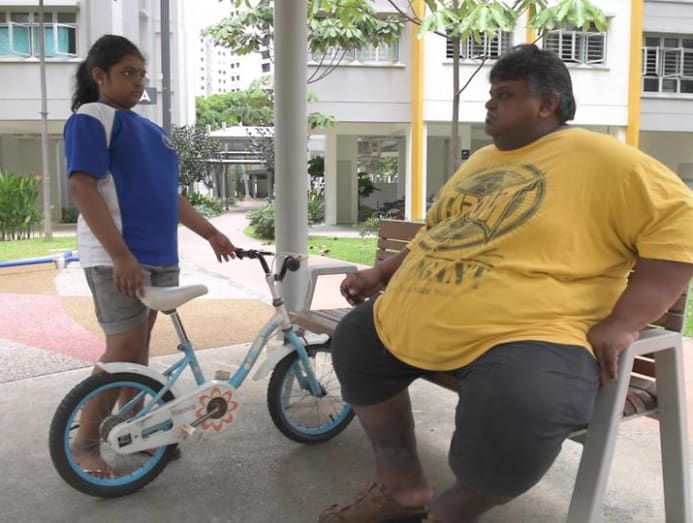
These are stories that one doctor has heard many times before. Tan Chun Hai, a consultant in Khoo Teck Puat Hospital’s (KTPH’s) department of general surgery, has seen many patients like Vasoo.
“They have difficulty fitting into the society. They take up more than one MRT seat (and) have difficulty getting on the bus,” he cited. “They walk around and people laugh at them. They (face) psychosocial stigmatisation of obesity.”
By the time most of his patients see him, they would have been obese “for a long period of time”. “They’d have tried 10 (to) 20 years of dietary-lifestyle modification,” he said.
When his patients see him, they would have realised they cannot lose weight on their own or sustain a durable weight loss over time.

And he offers a solution that more Singaporeans are now becoming aware of: Bariatric and metabolic surgery, a treatment for not only their weight problems but also the accompanying health issues.
It was what Vasoo opted for after deciding that he had “better do something” and not “stay like this any more” — and CNA Insider tracked his journey for over a year, from pre-surgery to the outcome today.
WEIGHTY ISSUES
Since 2014, the number of people coming forward and qualifying for this surgery in KTPH has doubled, from 49 cases then to about 100 a year.
Vasoo was no ordinary patient, however, as he had a body mass index (BMI) of 70, which meant a high risk of serious health complications. For the Asian body, a BMI of more than 37.5 denotes morbid obesity.
WATCH: My weight loss surgery journey as a 212-kg man (12:18)
But it was not always like this for him. About seven to eight years ago, he weighed 120 kg; he had been overweight since his teenage years, but he felt “happy” and “light”.
His weight started climbing after he had changed jobs, from driving a tipper truck to driving a coach. His work became “too relaxed”, and he started snacking a lot, especially with the irregular hours of his new job.
“You drive, you eat, you sit down,” he said. “There’s no exercise.”
The first thing he noticed was his clothes getting tighter. After some time, his friends also sounded a note of caution.
“What happened to you? Why are you putting on so much weight?” he related. “You better be careful … Do some walking, because you have two kids.”
His weight gain began to affect him in “a lot of ways”. When he fell at home once, he realised he could not pick himself up. “I tried getting up, turning here and there,” he recalled. “I couldn’t.”
His young daughter was at home, crying and “afraid” for him. So he finally “forced” himself up.
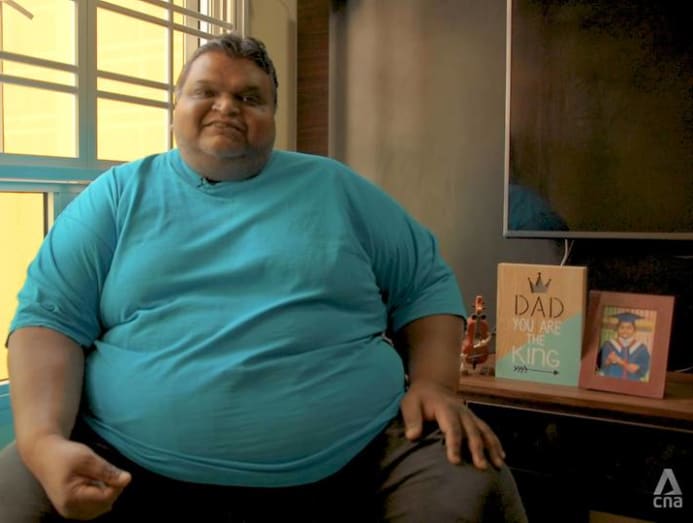
Then there was the time he dropped some coins from his pocket. He could not bend to pick them up. “An old man came and helped me. (He said), ‘I understand, you don’t worry,’” recounted Vasoo.
“He picked up all the coins and gave them to me. Then I held his hand and said, ‘Thank you very much, uncle. I’m very sorry.’”
Eventually, his weight affected his career too. His stomach had got so big that it reached the steering wheel. And his employer called into question his driving ability. He went from driving full-time to being a relief driver.
UPHILL STRUGGLE
Losing the weight he gained was not easy for Vasoo.
He has chronic asthma, which makes exercising difficult for him, although he tried. “(I’d) just take a slow walk, then wait for five minutes, (another) slow walk, (then) wait for five minutes,” he cited.
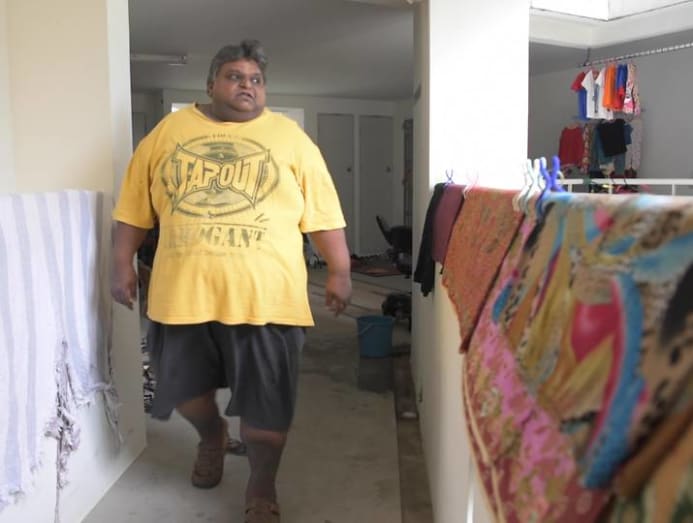
He also has an old knee injury, which makes it doubly difficult. Chun Hai noted: “At his weight, he’d be at risk of … injuring (himself) and having a fall during exercise.”
Vasoo tried diet pills for a few months but found them to be “very expensive”, at more than S$100 a month. And he said that whenever he stopped taking the pills, he gained more weight.
He also went to KTPH’s Integrated Care for Obesity and Diabetes clinic — where Chun Hai is a consultant — for several rounds of weight management through dietary and lifestyle modification. His lack of success can be explained medically.
“Obesity now has been classified by the World Health Organisation as a chronic relapsing disease … which means you may have some success in losing weight initially but (it) may come back at a later date,” said Chun Hai.
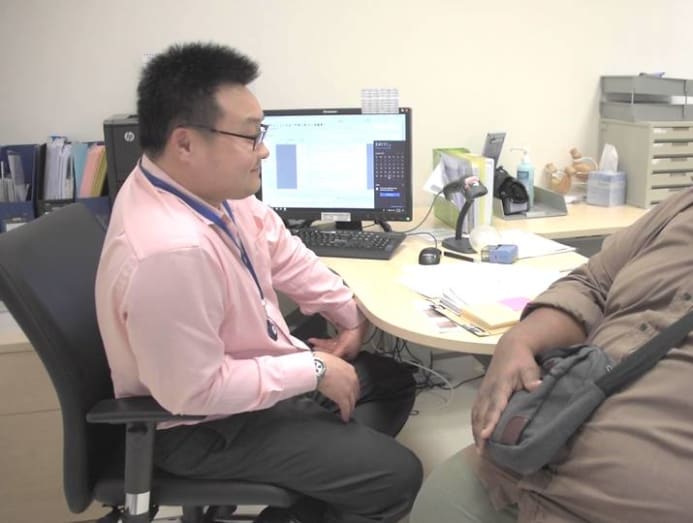
For those who are “just overweight” or have Class I obesity (with an Asian BMI of less than 32.5), a change in lifestyle and diet can be effective. But those who are more obese are likely to need more help.
“The longer that you stay in the obese category, the more likely that you’ll have cardiovascular or cardiorespiratory incidents, a risk of stroke, heart attack, obesity-related cancer and comorbidities such as diabetes,” said the doctor.
For this category of patients, which Vasoo fell into, “the most effective” solution with long-term results is surgery.
In fact, his wife had been nudging him to consider this for a few years, but he was concerned about the cost. He did not think he could afford the time either.
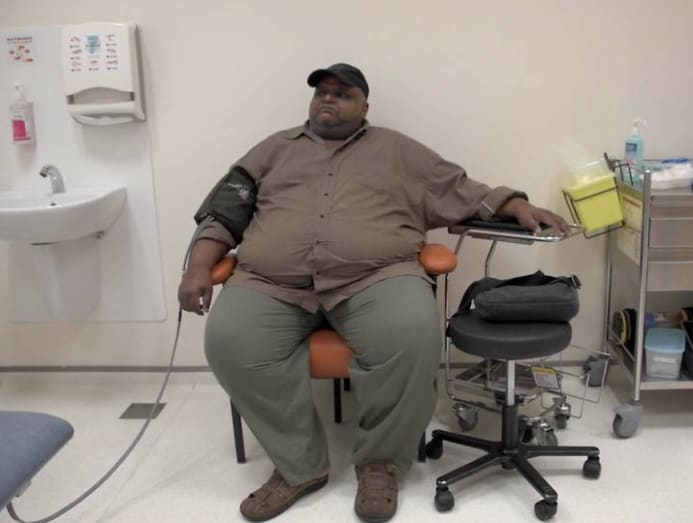
It was only after his sister went for the same operation, and received help from the medical social worker, that he decided to go for it, “for a better life, a better future”.
A SIX-WEEK PLAN
In September 2019, Vasoo secured a referral to see Chun Hai, KTPH’s bariatric and metabolic surgeon, who recommended a sleeve gastrectomy. This involves removing more than 60 to 70 per cent of the stomach.
What is left of the stomach would look like a “curved banana”, which restricts the volume of food intake to “about 20 to 25 per cent of what a normal person would eat”.
The part that is removed is also the production centre of the appetite hormone, so its removal would lessen the patient’s hunger.
It is the most common bariatric surgery performed in Singapore and globally, said the doctor. And normally, this keyhole surgery requires the patient to stay in the hospital for a day or two.
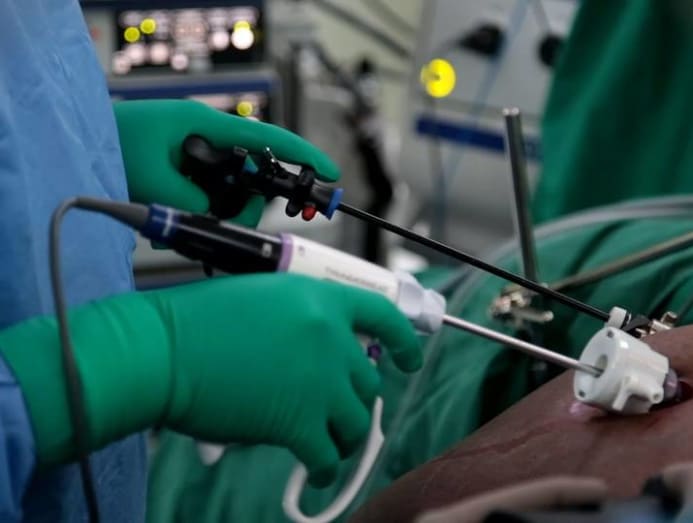
But because of Vasoo’s BMI, he had to get his weight down to 180 kg, to reduce the surgical risks. Cases like his, requiring pre-surgery weight loss, make up 10 to 20 per cent of KTPH’s bariatric caseload.
A six-week plan was devised for him involving a team that included endocrinologists, a dietitian, a nurse co-ordinator, a physiotherapist, a psychologist and a medical social worker.
Vasoo was given an exercise regime and a low-caloric diet, i.e. meal replacement shakes, to follow at home for the first three weeks. He struggled with the calorie reduction, noted KTPH senior dietitian Hedy Cheng.
“Usually (in) the first few days, there’d be a drop in energy level because there’s a drastic change from eating to not eating (as much),” she said. “However, after that, your body kind of adapts.”

Sessions were also scheduled to “teach him how to practise healthy eating”. She explained: “After the surgery, (patients) still need to know how to … make the correct food choices.”
In the second three weeks, Vasoo was hospitalised to step up his customised care plan and ensure his weight loss, and for the various specialists to assess him.
Said Chun Hai: “For high-grade obesity, your risk of cardiorespiratory complications from surgery is higher, which is the reason we get the cardiologist and respiratory medicine and an anaesthetist to come on board, to optimise the patient for surgery.”
And in Vasoo’s case, their assessments showed that he had a heart condition, which needed stabilising and monitoring first. So his surgery — scheduled for December 2019 — was postponed.
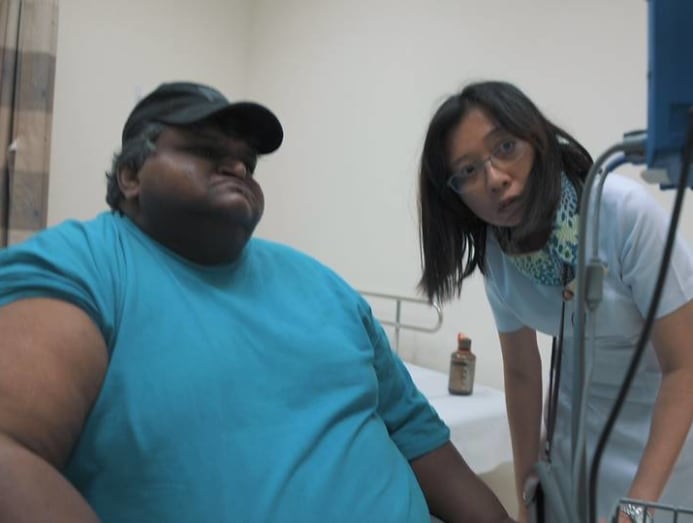
‘A LIFELONG COMMITMENT’
Vasoo was re-admitted to hospital in February last year to prepare for surgery for a second time. This time, COVID-19 scuppered his hopes as hospital resources were re-allocated to tackle the outbreak.
At this point, he almost gave up, with all the uncertainty caused by the novel coronavirus. But he soon received unexpected news.
“I was really down (and) I was looking for a job. Then (Dr Tan) suddenly called me, and he told me, ‘I’ve got good news for you. I’ve already made an appointment for your operation,’” he recounted.
A window had opened when the COVID-19 cases were tapering, before the surge in infections emerged in the foreign worker dormitories. March 11 was set as the date.
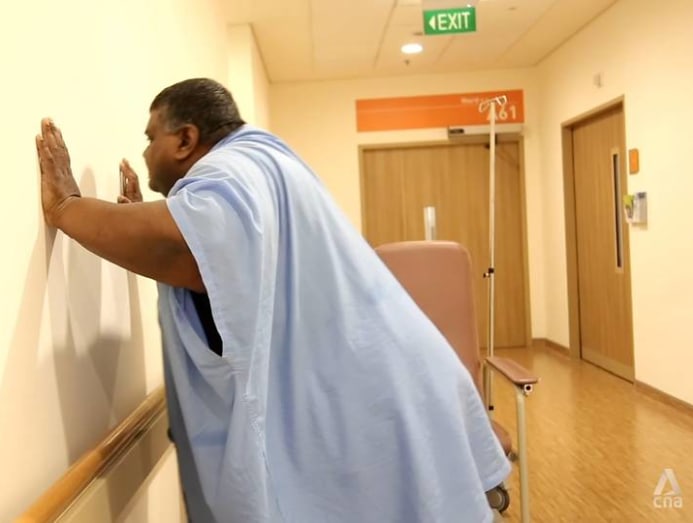
Special arrangements had to be made for his surgery: Longer instruments were needed to reach his stomach; and the operating table was extended at the sides to support his weight.
For his part, he had dropped his weight to 188 kg, close to the target of 180 kg.
“He has shown great strength and mentality in persevering through these setbacks,” remarked Chun Hai. “We didn’t have any hiccups … (The surgery) went according to plan.”
The operation took one to two hours, and Vasoo was discharged a few days later. But it was not the end of his weight-loss journey.
He had to subsist on a liquid diet for the first fortnight and then pureed food for the next fortnight, before progressing to soft food.
Even now that he is back on regular food, he cannot eat regular portions. If he overeats or eats too fast, without chewing his food well, he risks vomiting.
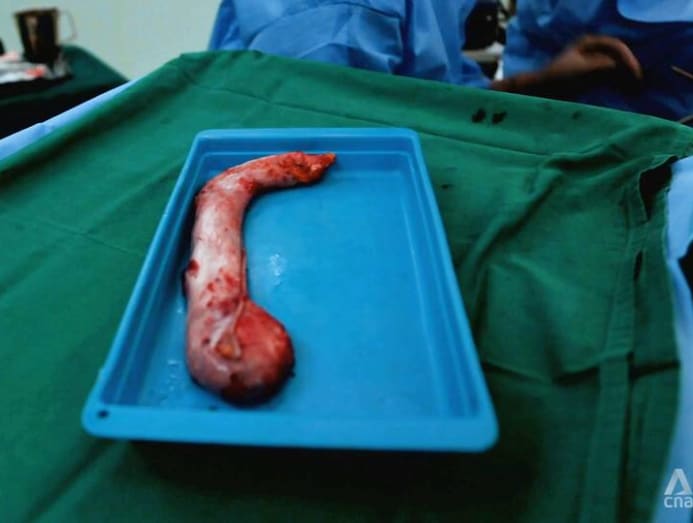
He misses his mee pok “so much” — if he buys a packet of wonton mee, two to three forkfuls are enough to fill him up. “You must get used to it,” he said. “I must just continue this way.”
There is, as Chun Hai noted, no “magic pill” for weight loss without continual efforts. “Bariatric and metabolic surgery isn’t the easy way out of obesity, but it’s a lifelong commitment to a healthier lifestyle,” he said.
At the same time, he wants those with higher-grade obesity to come forward earlier for treatment. “Patients shouldn’t consider the surgical option as the last treatment option,” he stressed.
“The longer you wait … the longer you risk getting your comorbidities, such as diabetes, hypertension, fatty liver and obstructive sleep apnoea.”
Vasoo’s sleep apnoea has improved, for example, so he no longer feels tired in the day. And he is back to driving a bus full-time without facing any problems.
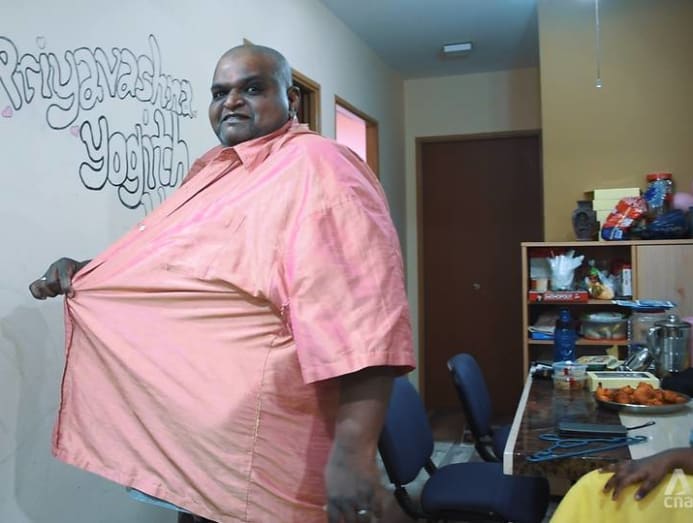
“I go to bed fresh, I wake up in the morning fresh,” he said. “It’s a lot of difference.”
He gets his exercise by washing the bus and also does housework, which he could not do when his weight ballooned previously. He also gets to play more with his son and daughter, aged seven and 11 respectively.
At 162 kg, he has shed nearly a quarter of his total weight. It is still a work in progress, but he no longer feels “scared to go out”.
“Right now, (people) look at me (as) a normal person. I feel happy,” he said.










